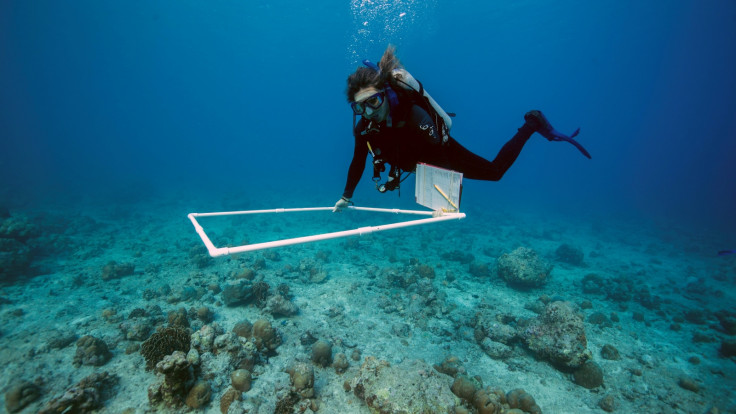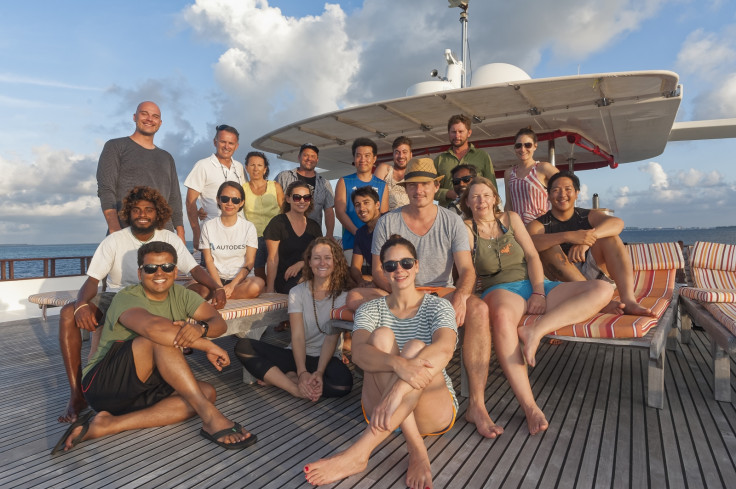Don't believe in climate change? These 3D models of the Great Barrier Reef tell a damning story
Marine biologists have turned to 3D modelling to educate the world on increasing damage to coral reefs.
Coral reefs are stunningly beautiful diverse underwater ecosystems found in Southeast Asia, the Red Sea, the Indian Ocean and the Pacific. They are estimated to cover 284,300 sq km, which is less than 0.1% of the world's ocean surface, yet they provide a home to at least 25% of all marine species in the world.
You might think that coral reefs are simply beautiful aspects of nature that are nice to look at when you go on holiday, but they're much more important than that. It is estimated that 500 million people in the world currently depend on coral reefs.
Not only do coral reefs protect coastlines from storms and erosion, they also provide medicines, jobs and income for local economies from fishing, recreation and tourism. These marine habitats are vital to mankind, yet they are now dying due to global warming – you know, that concept the Trump administration doesn't believe in.
The coral reefs are dying, and it's due to climate change
The Hydrous is an international non-profit organisation focused on protecting the oceans that is made up of marine biologists, naturalists, technologists, film-makers and media practitioners. It has been working to understand the full extent of why the Northern Great Barrier Reef is dying, so that it can educate the general public about the problem.
In 2016, 80% of the 800km Northern Great Barrier Reef experienced bleaching. Bleaching is when the sea surface temperatures are so hot that they cause helpful symbiotic organisms called zooxanthellae that live in the coral animal's tissues to leave.
The zooxanthellae provide the beautiful colours that people love to look at, and the organisms play a vital role in generating food to keep the coral alive. But when the water gets too hot, the zooxanthellae either die or leave its host. The coral begins to starve, and as it is dying, it turns white, and you can see its skeleton within.
Although coral reefs are typically located in shallow, clear and sunny waters, it is difficult to gauge damage when you have to inspect 800km of coral colonies. In the past, marine biologists would have to dive down to the reef, get out a measuring tape, measure changes to the reef, take a photograph with a water-resistant camera and then make markings on the photograph where they think the change has occurred.
Alternatively, marine biologists could use multibeam sonar devices to map the Barrier Reef, but this technology is only available on large research vessels typically owned by governments that cost $100,000 (£80,430) a day to run.
Using 3D modelling to gauge damage to the Great Barrier Reef

But emerging technology is helping to make a difference. Nowadays, the team from The Hydrous dives to the ocean floor and takes hundreds or even thousands of photographs of the reef in places like the Maldives, Indonesia, Hawaii and the Easter Islands from a multitude of angles.
When they get back to dry land, Remake and Recap 3D modelling software provided by Autodesk stitches the images together to form a comprehensive virtual three-dimensional model.
The Autodesk software works by sending the images into the cloud, where they are processed by computer algorithms, and you receive an email when the model is ready. You can also choose to process models offline on your own computer, but you will need a lot of RAM.
The software creates a full 3D topology and matches the colours from the photographs to make it easier for the scientists to detect changes over time.
"The models give us a lot of information like volume, surface area, growth form (shape of the colony), as well as damage and we can also measure change over time. If I go to the Maldives and do photogrammetry (reality capture), then come back a year later, the software will compare the models so I'll have a really accurate reading of how much has changed, grown or lost," Dr Erika Woolsey, The Hydrous' cofounder and chief executive tells IBTimes UK.
The 3D models generated also make it much easier for The Hydrous to help local people to understand the devastating effects of their actions on the coral reef, aided by 3D printed models produced using Windows PCs and 3D printers provided by Lenovo.
We must convince the world to believe, before it is too late

"There's a total denial of climate change. The 3D models are a very visual way to show in augmented and virtual reality how beautiful these places are and expose the damage. This helps us to communicate clearly with visual data rather than numbers no one believes," says Woolsey.
"Bad fishing practices like using dynamite to kill fish can be controlled if you help them understand they will have no more fish to live on if they kill the coral, that they will have no more tourism. In the Maldives, thanks to these easy-to-understand visualisations, they can explain and educate a long-term impact."
Autodesk says that anyone can learn to use its software within 20 minutes, and the Autodesk Foundation provides the software for free to students, non-profits and organisations working on high impact projects like the work that The Hydrous is doing.
Of course, The Hydrous is not the only organisation working to protect the Great Barrier Reef – there are other firms using underwater robots, and in Australia government agencies are embedding 3D printed reefs into the ocean as a habitat for fish.
"The biggest message that all coral reef scientists are delivering now is that we know how important these coral reefs are, they support hundreds of millions of people around the world. We know that to keep them healthy we need to reduce emissions, keep them healthy. The frustrating part is that this knowledge isn't translating into public understanding and policy," stresses Woolsey.
"Baba Dioum, a Senagalese forestry engineer, once said, 'In the end, we will conserve only what we love, we will love only what we understand, and we will understand only what we are taught.' That's the heart of what we're doing at The Hydrous. The coral reef ecosystems on our planet are incredibly valuable and beautiful. Unfortunately, they are in a lot of trouble. We need to unite in protecting them."
© Copyright IBTimes 2025. All rights reserved.






















